What is the difference between German Smear, Mortar Wash, and Limewash? Learn the pros and cons of each technique: german schmear vs. mortar wash vs. limewash.
If you’re considering refinishing your brick exterior, you might be confused by all the different options – I know I was! German Schmear vs. Mortar Wash vs. Limewash… what is the difference between each technique? In preparation for our exterior makeover, I’m doing the research (and summarizing it for you, too!).
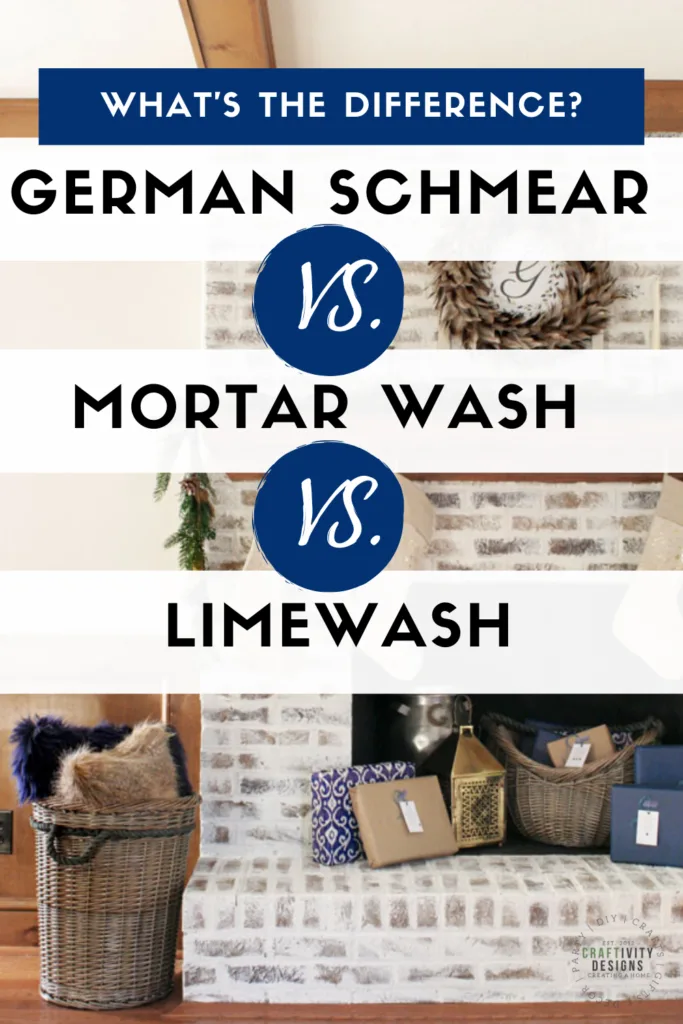
What is German Schmear?
A German Schmear is a technique that partially covers brick (or stone) by smearing mortar across the brick (or stone) face. It resembles old-world European cottages (hence, why we chose the look for our modern cottage) that have:
- heavy mortar lines,
- weather-worn exteriors, and
- brick or stone which has required mortar repair over the years.
We chose a faux German Schmear for our brick fireplace. Instead of using mortar, paint is a less-intimidating way to try this technique for the first time.
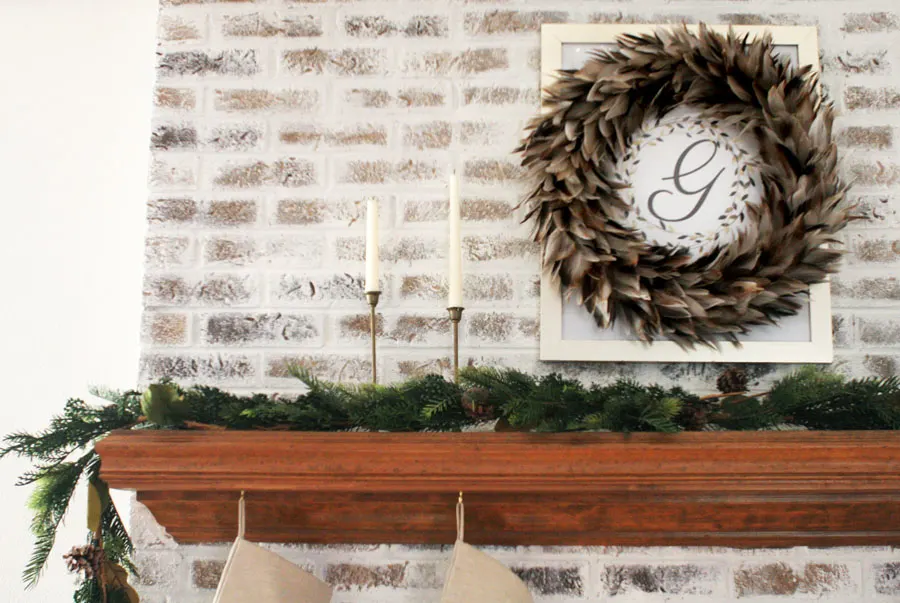
What is German Smear?
German Smear is the same as German Schmear, only a different spelling. So, which spelling is more accurate?
The term ‘Schmear’ originates in the German language. It is synonymous with English words such as ‘smear’ or ‘spread.’ Therefore, ‘schmear’ is authentic to the technique’s European roots. However, the term ‘smear’ is easier understood in the English language.
What is Mortar Wash?
Mortar Wash is actually the same technique as German Schmear, only a different name. So, yes, – if you’re counting – we now have three names for the exact same technique:
- German Schmear
- German Smear
- Mortar Wash
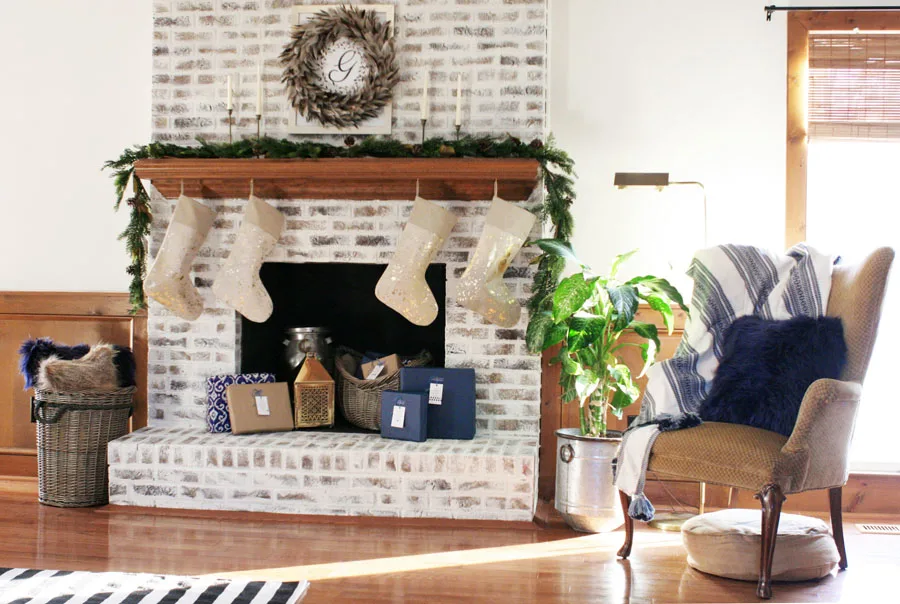
The term Mortar Wash originated from the fact that an authentic German Schmear utilizes mortar as the primary material. The mortar is applied so that it only partially covers the brick or stone.
Need instructions for how to mortar wash? Check out this tutorial from Dimples and Tangles.
You might also like: Before and After Photos of German Schmear Fireplaces
What is Limewash?
Limewash is made from crushed limestone which is mixed with water to create a paint-like substance. However, unlike paint, limewash has a matte texture (similar to the texture of chalk paint).
An ancient painting technique (it dates back to Roman times), limewash ages beautifully. Porous surfaces absorb the limewash creating a natural, earthy appearance.
The finished look is similar to german schmear or mortar wash. In these examples of exteriors with german schmear, the last two are actually limewash.

You can make your own limewash and dye it with natural pigments, or buy it premade.
Need instructions for how to limewash? Check out this detailed tutorial from Repurpose Life Blog.
What is Whitewash?
Dilute white paint with water to make whitewash. It’s common to confuse whitewash and german schmear, but the techniques are quite different:
- apply thick mortar wash and german schmear, vs.
- apply thin paint (i.e. whitewash).
Whitewash is essentially a translucent paint, due to dilution, that does not fully hide the color and character of the brick (or stone) like traditional paint.
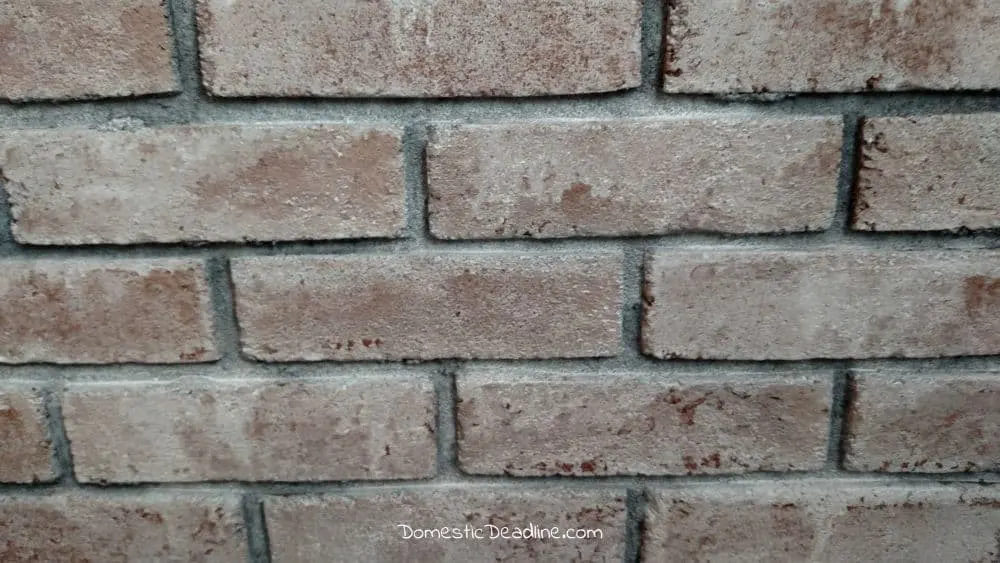
Need instructions for how to whitewash? Check out this detailed tutorial from Domestic Deadline.
You might also like: How to paint a brick fireplace, and which paint to use.
FAQs
What is the difference between limewash and german schmear?
Limewash is made with crushed limestone. German schmear (or smear) is made with mortar.
What is the difference between whitewash and limewash?
Dilute white paint with water to make whitewash. Make limewash by mixing crushed limestone and water.
What is the difference between mortar wash and german smear?
Nothing! It’s the same technique, just two different names.
Like this DIY project idea? Pin it to save it!
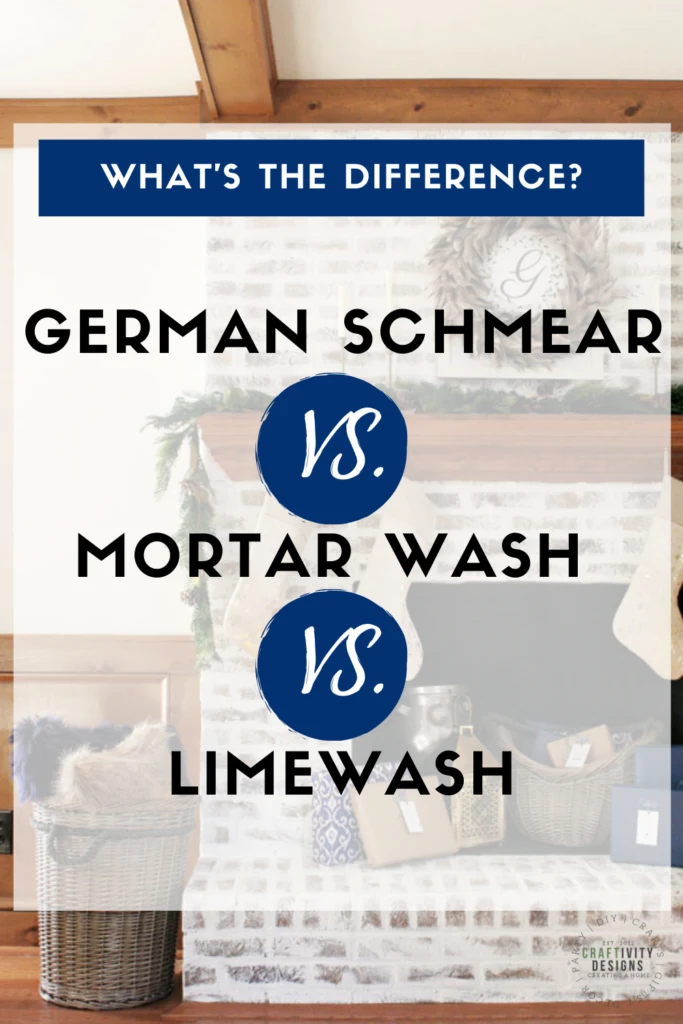

Sveta
Monday 2nd of August 2021
Lora, Thank you for the helpful article! Can you please tell me if the solution stains when it dries? Will I get dirty?
Lora Green
Thursday 5th of August 2021
Sveta - It depends on which solution you use. German Schmear made with paint can stain clothing or fabric just like any wall paint. Mortar wash made with mortar will come out of clothing but can stain some surfaces if left on too long (such as concrete). Finally, limewash made with lime actually hardens to a "limestone"-like finish that is hard to remove.
Robin
Monday 1st of March 2021
I have a dark brown 80s fireplace. I want to lighten it to more of a beige color. Don’t want to paint it but want de of the lighter colors to show through. Any advice?
Lora Green
Monday 8th of March 2021
Any of these (german schmear, mortar wash, limewash, or whitewash) would be a great option. Each technique can be colored to a beige hue. Whitewash is a naturally thin application method, so it may be your best bet if you want the colors to show through. For the other techniques, you would apply less of the paint/mixture. For example, focus the application on the grout lines and edges/corners of the brick face as opposed to the center of the brick face.